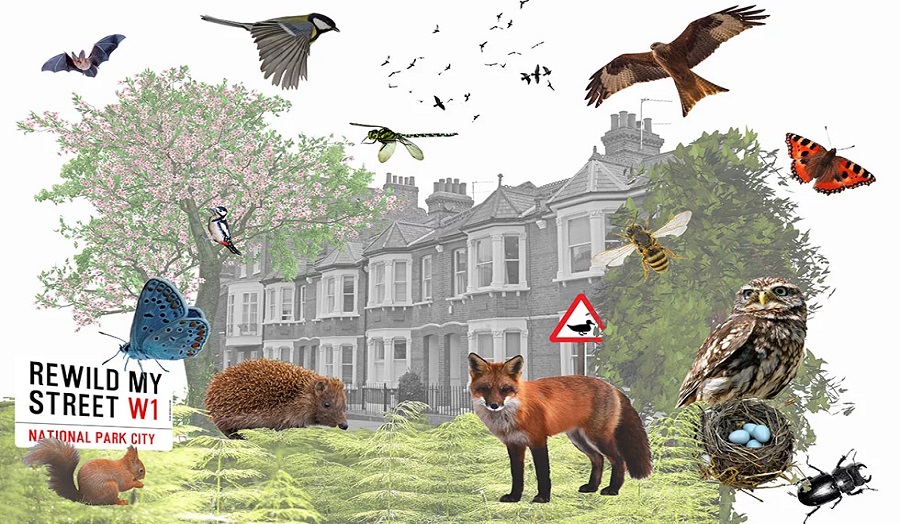Siân Moxon’s Rewild My Street campaign profiled in prestigious design magazine.
Date: 22 July 2022
Siân Moxon, who teaches across the Architecture and Interior Design courses at both undergraduate and postgraduate level, explored environmental design and her conservation initiative ‘Rewild My Street’ in the July issue of Designer Magazine.
Siân is an expert in sustainable design and is leading the School's response to the climate and ecological emergency through Architecture Education Declares.
Her Rewild My Street research project uses architectural drawings to inspire and empower residents to transform London’s streets for wildlife. The drawings are shared in the rewildmystreet.org website, which forms a design toolkit, recommending products and activities to attract wildlife, and curating expert information on urban species and habitats.
In the piece for Designer Magazine, Siân commented on the importance environmental concerns have within the design process. “Designers are duty bound to address both the biodiversity and climate crises, given industry initiatives such as Architects’ Climate Action Network, Interior Design Declares and Landscape Architects Declare. Besides, greening cities has wider environmental benefits, contributing to better air quality, amenity value, and climate change resilience against flood risk and overheating.”
Siân detailed key advice for designers trying to incorporate more rewilding and environmentally beneficial aspects to their design process. “The first step is to see every component of a home as a potential site for wildlife. Most obvious are the outdoor spaces, where even small areas count: a front or back garden, balcony, terrace or side return can accommodate many wildlife features.”
“Aim to include a pond and a tree, which make the most impact for wildlife and be in containers to save space, alongside mini meadows, log piles and bespoke homes for frogs and hedgehogs” also “building’s walls can host green walls and integrated habitat boxes for different bird species, bats, and solitary bees.”
The senior lecturer also detailed what designers should avoid doing. “Avoid artificial grass, an environmental no-no that excludes wildlife, exacerbates flooding, contributes to pollution and climate change, and is ultimately destined for landfill” and “Limit outdoor lighting, ensuring it is dim and downward-facing where essential, to avoid disturbing bats and other nocturnal animals.”
Looking to the future, Siân can see these methods and examples having a huge impact across London, and the country. “These domestic rewilding principles can be applied at city scale to any building type or external space. With this mindset, whole cities can be reimagined as green networks of ‘pocket parks', ‘tiny forests’, and ‘play streets', surrounded by ‘wild belts’ and connected by ‘slow ways’. With many cities following London in becoming National Park Cities and committing to become greener, healthier, and wilder, savvy designers can make their mark in helping shape how this is realised.”

